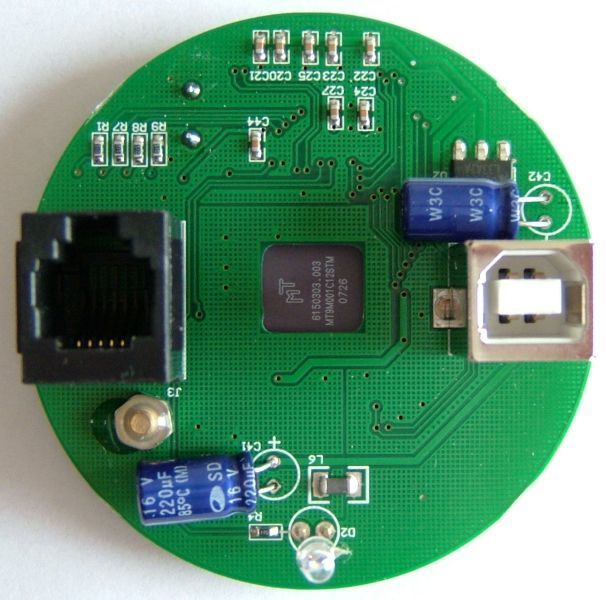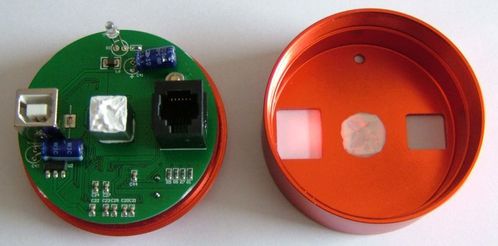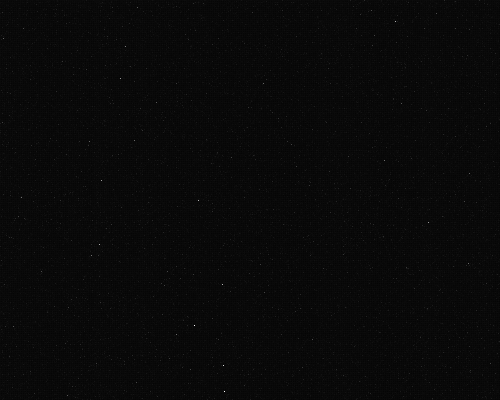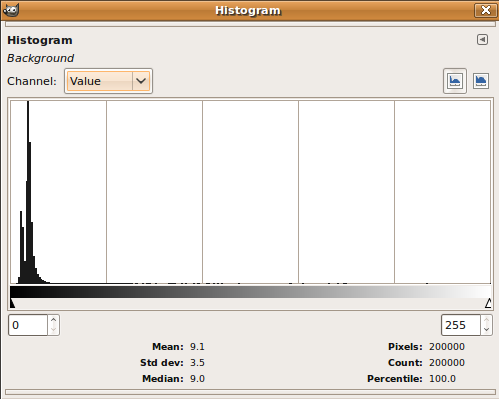Introduction :
The QHY5 imager/autoguider is really a nice cam. Fully supported by GNU/Linux, it works nice for guiding and planetary imaging. For deep sky imaging, the CMOS sensor is a bit noisy, but this noise can be significantly reduced using a simple passive cooling.
Theory :
The CMOS sensor dissipates about 350 mW. The CLCC 48 package free air thermal resistance is about 80 °C/W. So, at full power, the sensor temperature should be 28 °C over the ambiant temperature.
The QHY5 body is made of plain aluminium. In my mind, with a bit of calculus, it's thermal resistance should be about 13 °C/W. With perfect thermal junction, the sensor temperature should then be about 4,5 °C over ambiant temperature. We just gained 23,5 °C ! In real life, it should be much less...
How to do it :
Thanks to QiuHY, who designed this camera, there is a nice hole in the pcb, just behind the CMOS sensor. If this hole is missing, have a look at this page : Cooling the QHY5 imager/autoguider (step 1.5) .We just have to put a small piece of aluminium between the sensor and the camera's back, with some thermal paste.

The hole size is about 10mm x 9mm. The depth between the sensor's back and the camera's back is about 15mm. I used a simple 10mm x 10mm aluminium bar, cuted and chamfered it on one side to get 10mmx9mm.

It looks like that :

This finger themal resistance is about 0.7 C°/W.
Results :
The 350mW are a max value. In real life, without cooling, my sensor's temperature is about 17 °C over the ambiant temperature. The real CMOS dissipate power is then about 210 mW. With passive cooling, the sensor temperature is about 7 °C over the ambiant temperature. We gained 10 °C. The total thermal resistance is about 33 C°/W.
Results are nice. These two pictures are samples from a 30s dark frame, gain at 1, ambiant temperature at 22 °C. The first one, without passive cooling...


...and the second one with passive cooling :


Usually, CMOS sensor's thermal noise is reduced by 2 for each 5 °C. Our sensor's temperature has been reduced by 10 °C, and the noise by 4 ! Great !
For lower temperatures, see this article : QHY5 noise tests
I'm also working on a simple Peltier cooling : Cooling the QHY5 imager/autoguider (step 2)


